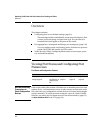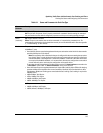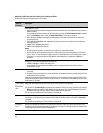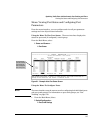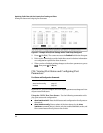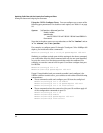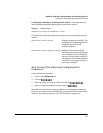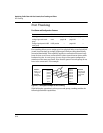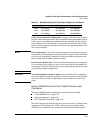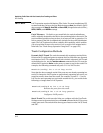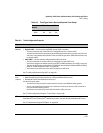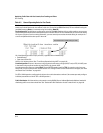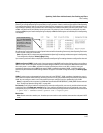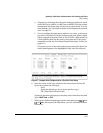
1
2
3
4
5
6
Optimizing Traffic Flow with Port Controls, Port Trunking, and Filters
Port Trunking
Port Trunking
Port Status and Configuration Features
Feature Default Menu CLI Web
viewing port trunks n/a page 9-16 page 9-18 page 9-24
configuring a static trunk none page 9-16 page 9-22 —
group
configuring a dynamic LACP
trunk group
LACP passive — page 9-23 —
Port trunking allows you to assign up to four physical links to one logical link
(trunk) that functions as a single, higher-speed link providing dramatically
increased bandwidth. This capability applies to connections between back-
bone devices as well as to connections in other network areas where traffic
bottlenecks exist. A trunk group is a set of up to four ports configured as
members of the same port trunk. Note that the ports in a trunk group do not
have to be consecutive. For example:
Switch 1:
Ports c1 - c4
configured
as a port
trunk group.
The multiple physical links in a trunk behave as one logical link
port c
port c
port c
port c
port c
port c
port c7
. . .
port n
port a1
port a2
port a3
port a4
port a5
port a6
port a7
. . .
port n
Switch 2:
Ports a3 - a6
configured as
a port trunk
group
Figure 9-5. Conceptual Example of Port Trunking
With full-duplex operation in a four-port trunk group, trunking enables the
following bandwidth capabilities:
9-10



